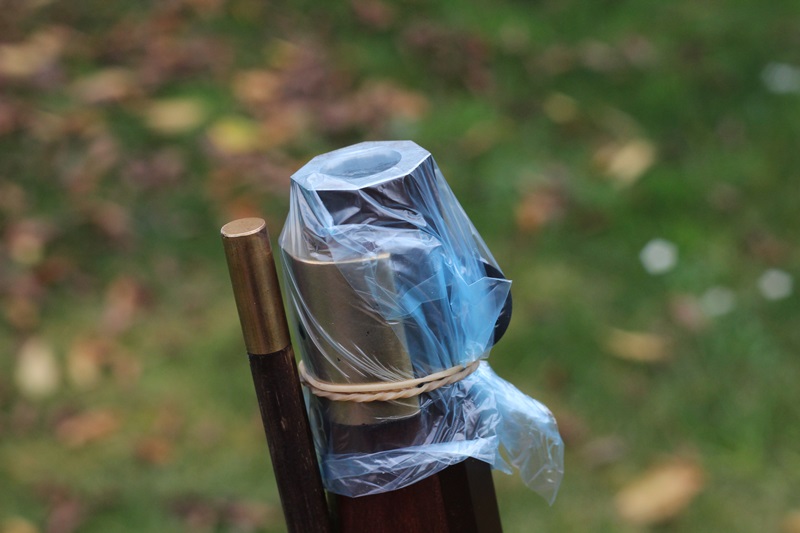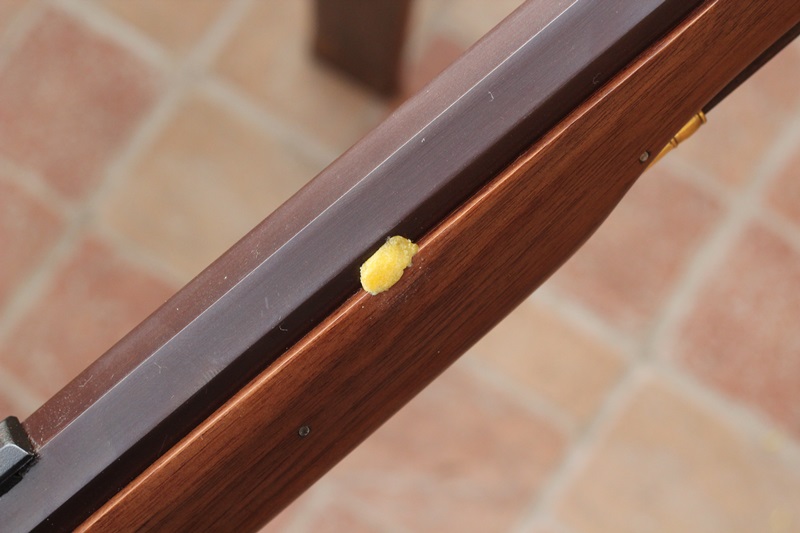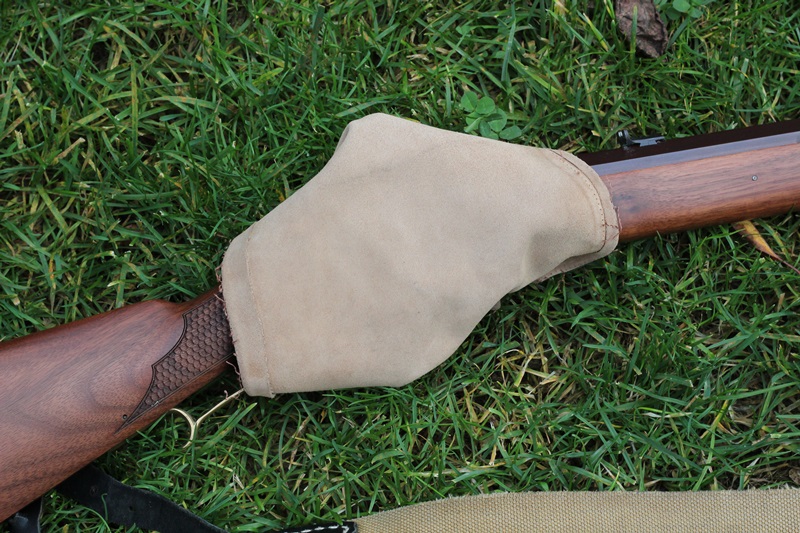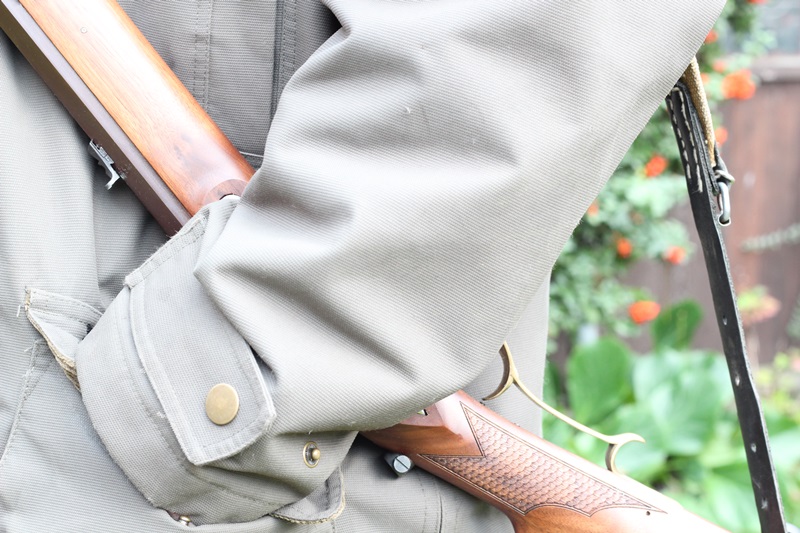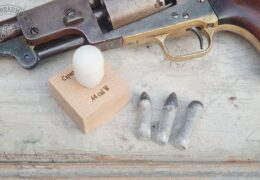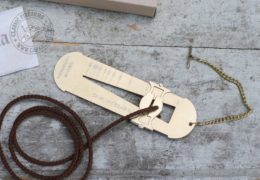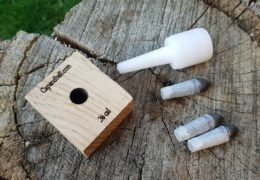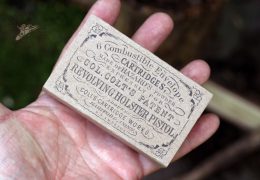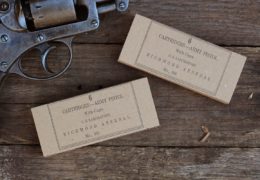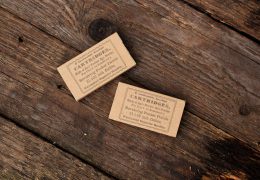Waterproofing your flintlock
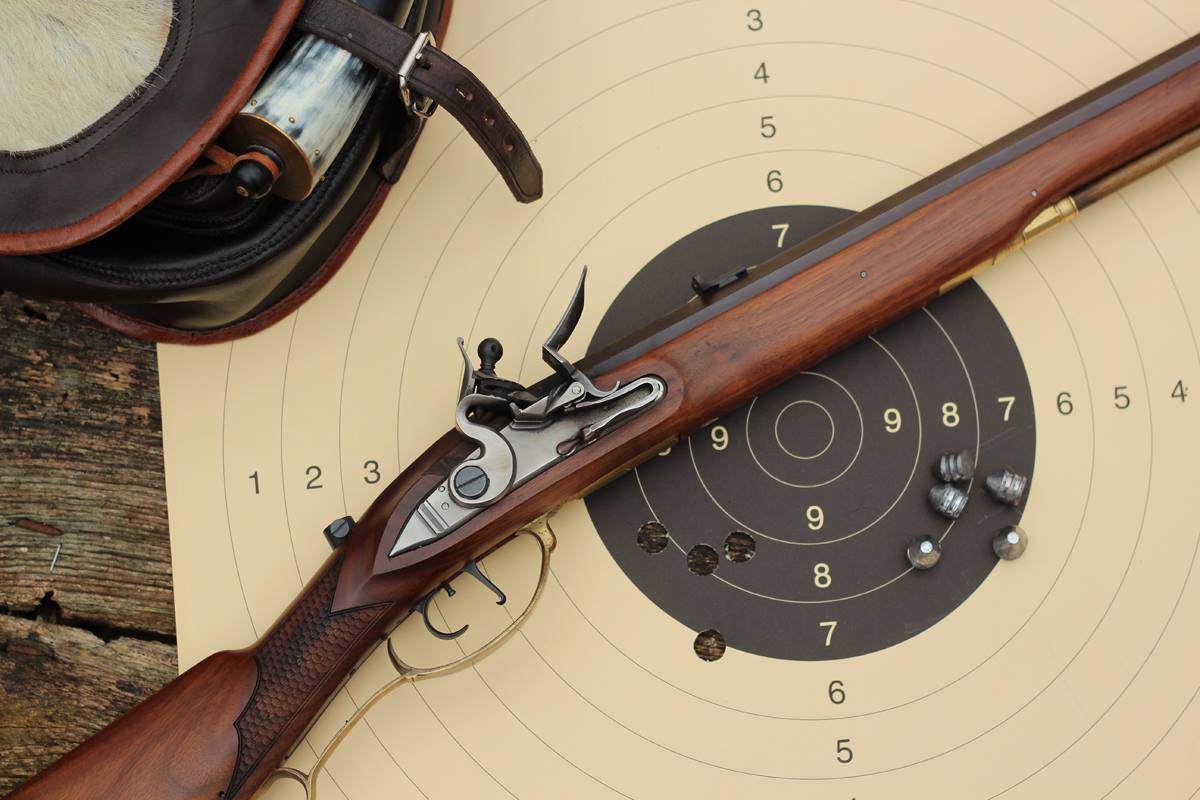
Hunting with a flintlock rifle in wet weather is not an easy job. Some consider it impossible but in fact this is not true. The old hunters knew how to waterproof their rifles. It was a rainy day yesterday. It started well, but as I arrived to the hunting ground storm clouds started to gather and just after the first few steps of stalking water started to fall from the sky as it was poured from a bucket. I had my flintlock Jäger rifle with me so you can imagine I was not too happy. I struggled to hide and protect my lock from the attack of the water. To tell you the truth I was not prepared for wet weather. I walked back to the closest shooting stand with roof and waited there till the end of sunset. Nothing moved in the forest so I had some time to think about the situation and decided to open my old books to see how our ancestors dealt with rain and wet weather while hunting.
The old hunters knew how to waterproof the flintlock rifle. It was so obvious for them, that they did not feel the need to write it down. The only information came from a book written in 1829: ”Use some beeswax to prevent rain getting into you pan.” Not much information but a good way to start. I am a lucky guy because I have many friends all around the World hunting with black powder rifles. Not too many are using flintlocks but still I could gather some good information from them as well. All of my friends pointed out that there are two fronts in battling water: we must prevent water getting into the muzzle and we must protect the pan and the area of the flash hole.
While sitting on the shooting stand in the rain I thought I will just cover my lock with a piece of leather. We’ll it turned out that it is not that easy. So here is the list I made with the help of my friends.
Preventing water moistening the powder from the direction of the muzzle
If you are using a patched roundball and your patch is saturated in some kind of greasy lubricant maybe you already have a tight-fitting plug protecting your powder. If your projectile is a conical bullet you will need some other help. I read on internet pages that some shooters apply some bullet lube over the projectile as well on a rainy day something like what we do with revolvers. I don’t think this is a good solution as the extra lube will change the ballistics of the bullet. I prefer covering the muzzle with something. something like a condom. This is not a new idea. Soldiers of the Second World War used this method to prevent sea water getting into the bore of the rifle while landing on beaches. Maybe it is not 100% authentic, but works fine. You will just have to explain your wife in an acceptable way why you need condoms for hunting…
Examining and tuning your lock
The precision of your lock is the key in waterproofing. There are two surfaces you have to check. Remove the lock from the stock, close the frizzen and hold the lock into the light to see if the pan and the frizzen close completely. If light is visible between them, use a fine sharpening stone to adjust the surfaces watchfully. Also check the area where the pan cover meets the barrel. There is a small gap here. The smaller the better.
Another thing to do is to polish the inside of the pan. The less scratches you have here the less it is capable of catching moister from the air.
Sealing the pan and the frizzen
The most important part of waterproofing the rifle is the waxing part. Traditional beeswax will work fine. Use a small piece to rub a 1 mm layer all around the edges of the pan where it meets the pan cover. The layer should be thick enough so when you close the frizzen you must feel that it is pushing the wax. Usually there is a small gap between the frizzen and the barrel as well. You can apply some wax here too.
Obstructing water channels
Raindrops can hit your lock directly, but this is not the only way water can get into your pan. The channel between the barrel and the stock can lead a little river of water straight into your pan. This is something you must prevent as well. There are two type of locks. The older designs like the early 18th century Jäger locks are not prepared for battling this little river of rain. These are not “waterproof” locks like the locks of the Mortimer rifles. If you check the Mortimer lock you can see that two “shields” are visible on the sides of the pan. To tell you the truth these are not rally shields. Their main purpose is to form a channel for the water so the river running all along the barrel will not flow into the pan.
If your lock has a traditional old-style pan, you have to obstruct the way of this water with a piece of beeswax pushed between the bore and stock somewhere 20-30 cm in front of the lock.
Lock covers
Another helpful accessory is the lock cover made from some kind of waterproof leather or oilcloth. You can make you own; it is not a hard job. But be careful! do not over think it. Make it simple and easy to remove.
How to hold the rifle while stalking in the rain
The traditional Central-European style of porting your rifle developed in the ages of muzzleloaders. The rifle is on the left shoulder with the barrel facing front, upward. There are many ideas why this method became the most accepted traditional way – like to differentiate the hunter from the soldier, etc… I think the answer is simpler than this. Check some old paintings. The hunter holds the rifle on the left shoulder in a horizontal position with muzzle facing front. This way the lock is under the stock so it is protected from rain and it is also possible to have the left arm as a cover. The barrel is horizontal so the water cannot fall into the muzzle. Simple isn’t it?
Today we don’t consider this method safe, as the barrel can point in the direction of your hunting buddy, but with a little modification it can be used. Just raise the muzzle up, so the barrel is not horizontal anymore and there you go.
The priming powder
Black powder and water do not match together well. The particles of black powder burn on the surface and catch moister on the surface. So the more surface you have the more water it will absorb. In rainy weather I suggest you to change to bigger granulation like the 4Fg or 3Fg. You will have a longer ignition time for sure, but your rifle will fire. A good deal, I think.
What to do just before shooting?
So we are there. The game just walked out of the woods at 50 m. This is the time of truth. But before pulling that trigger give another few second for the preparation: wipe the flint and the frizzen with a dry cloth.
What to do after shooting?
Weather you have a hit or miss reload immediately. But before repriming your lock wipe away all the residue from the flint, pan, frizzen. The residue will absorb water easily and will moister your priming powder later.
Waterproofing your rifle
We have to protect our rifle as well. I love my Jäger rifle and I want to treat it good so once I can pass it on to my son sometime. Water is not friendly with the metal parts so when you are preparing for the hunt take your time and disassemble your rifle completely. Cover all metal parts with a thin layer of water pump grease. Especially pay attention to the underside of the barrel where it meets the wood. Be careful! Do not apply any lubricant on the frizzen or the flint as this will prevent sparks.
Always have a little flask of oil, dry rag and cleaning patches in your hunting bag. Always pull the charge after a rainy day, and dry the inside of the bore as well.
So, this is it. Not a long list, but it was surely helpful for me. Thanks for all the hunters of old times and recent times who helped me collecting this info.
Balázs Németh
originally published: https://www.davide-pedersoli.com/rivista-dettaglio.asp/l_fr/idne_79/flintlocks-in-wet-weather.html

